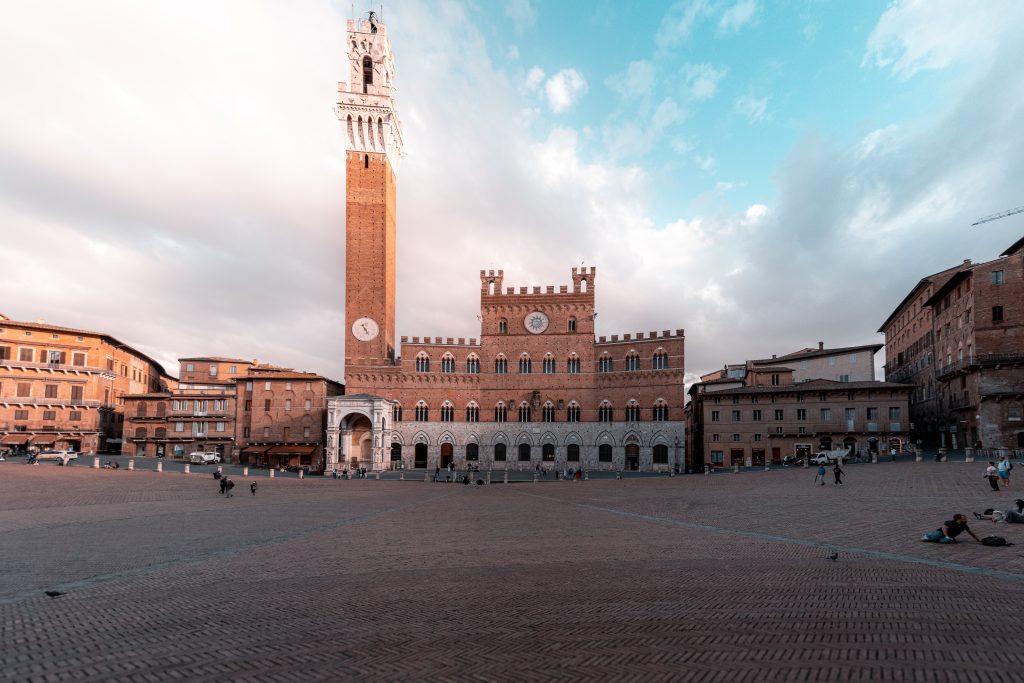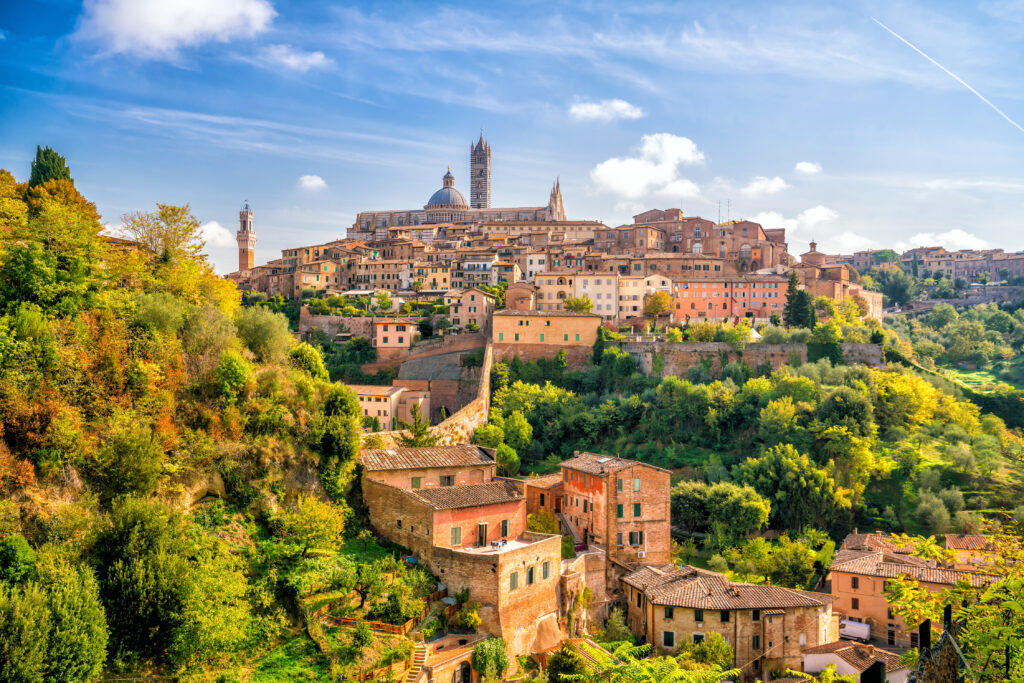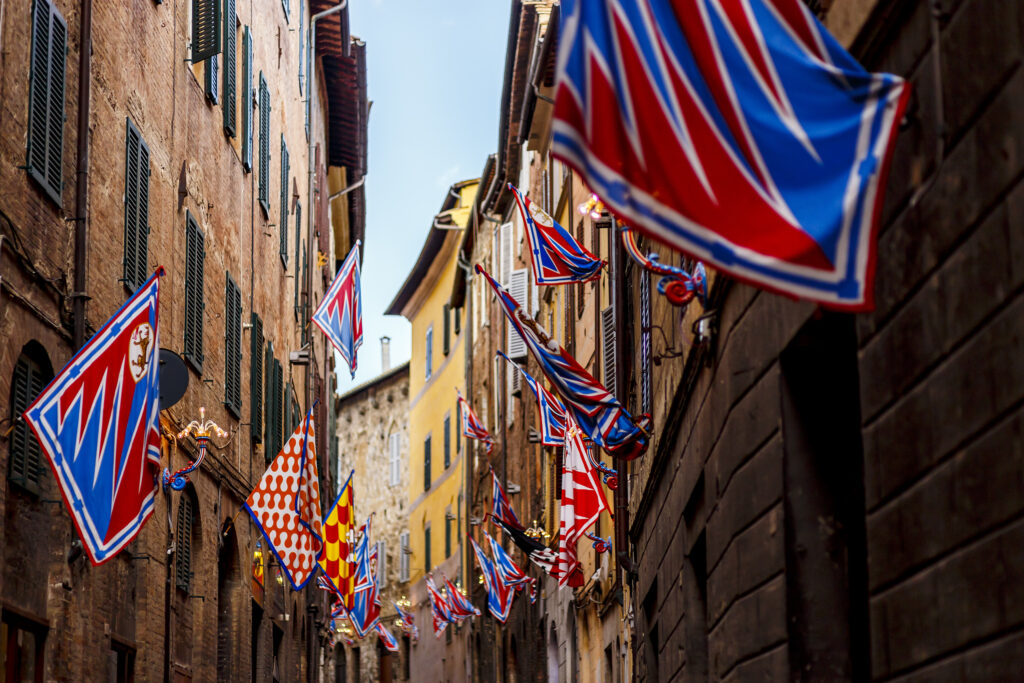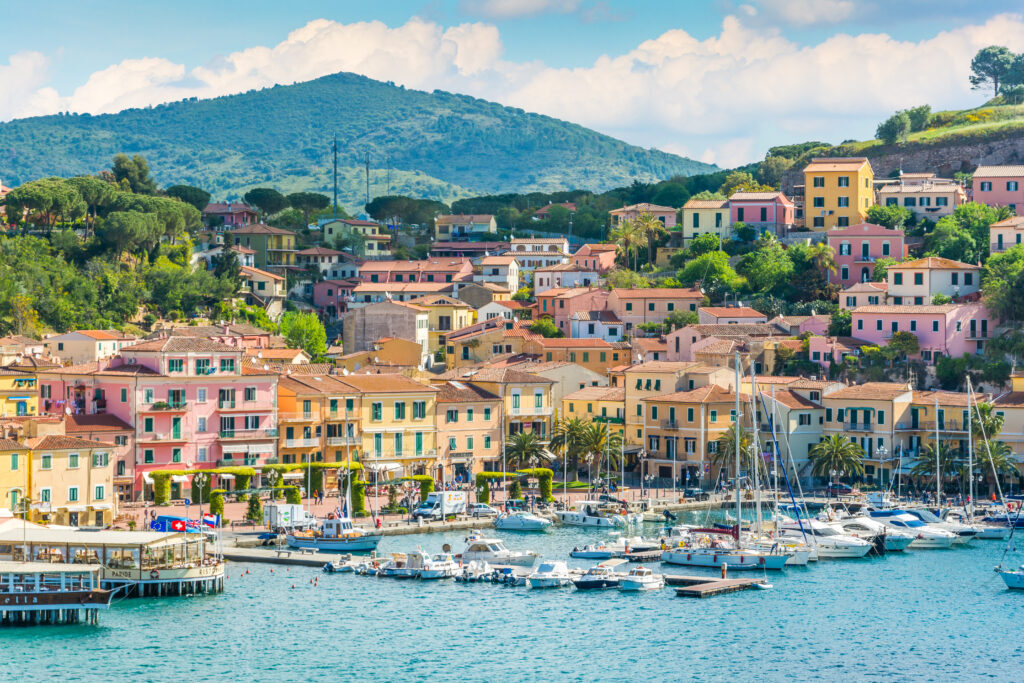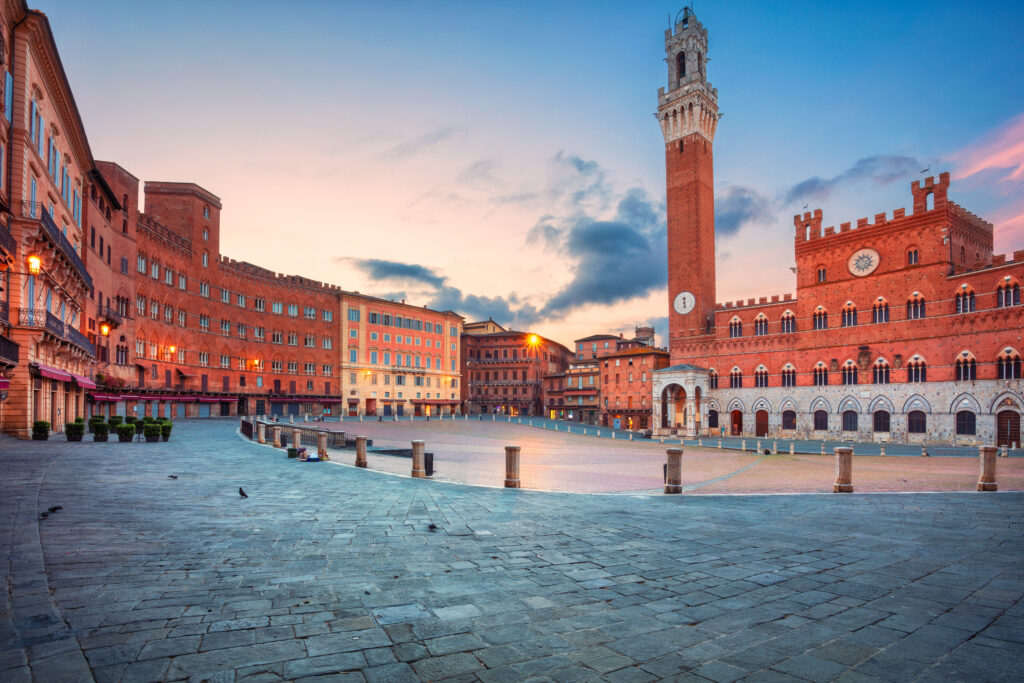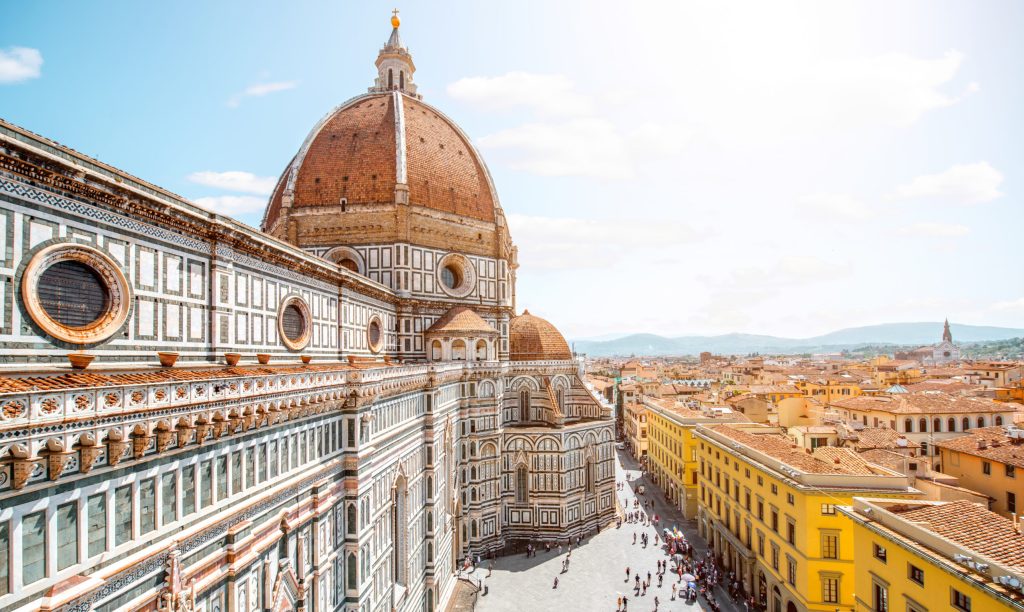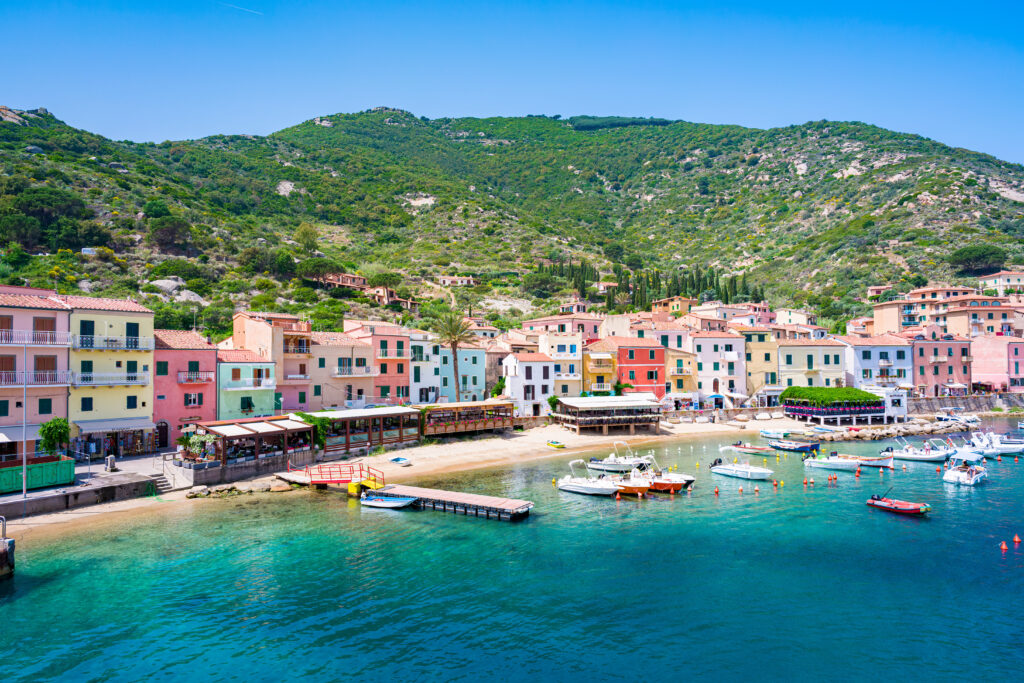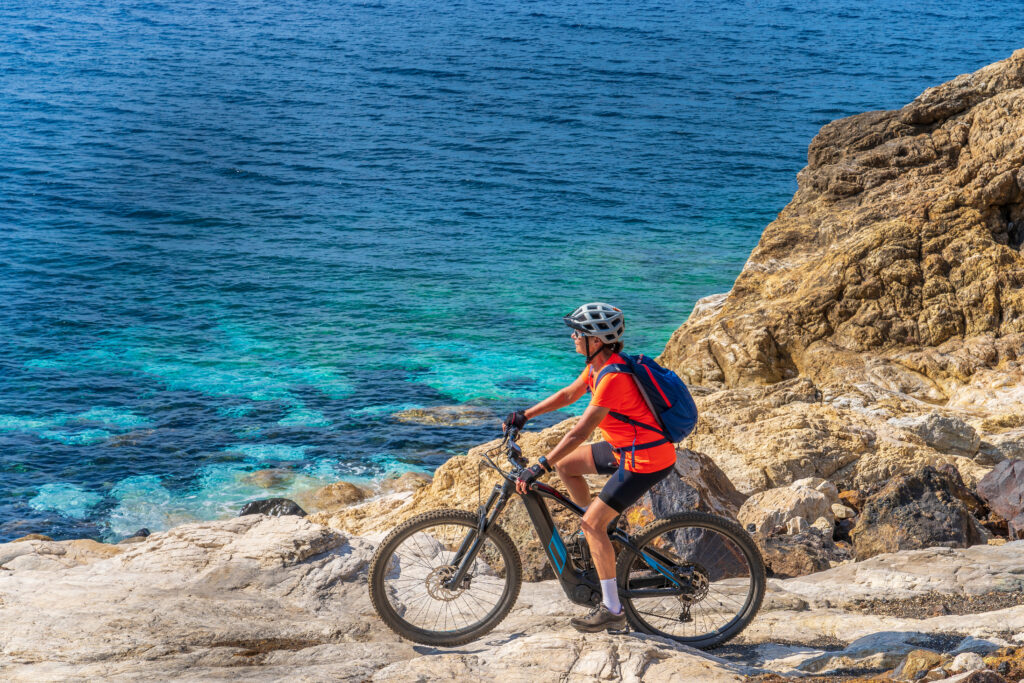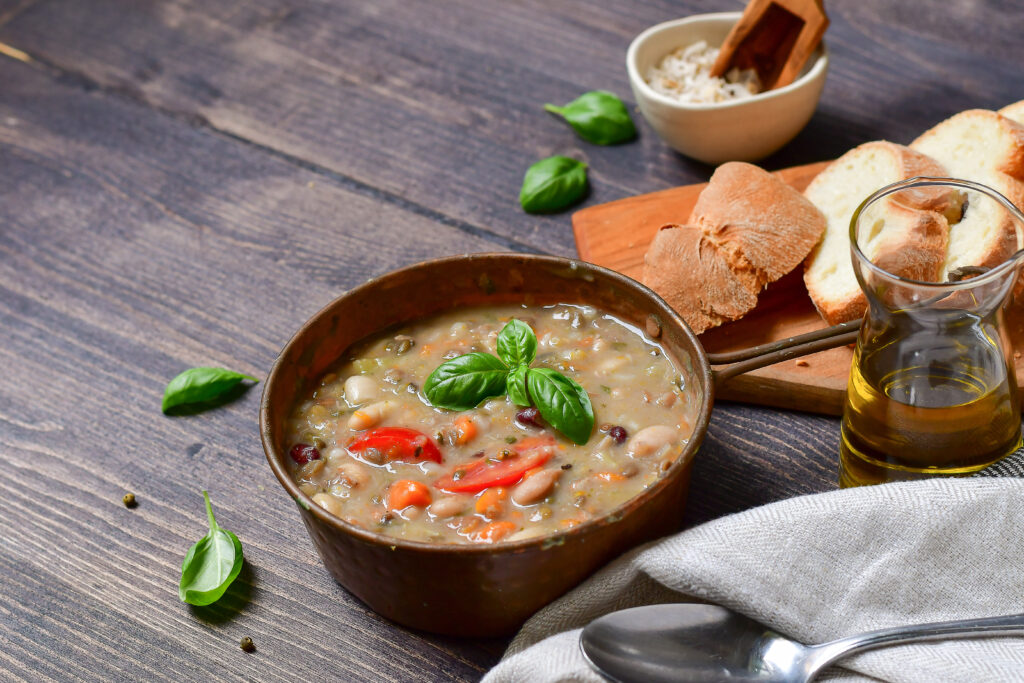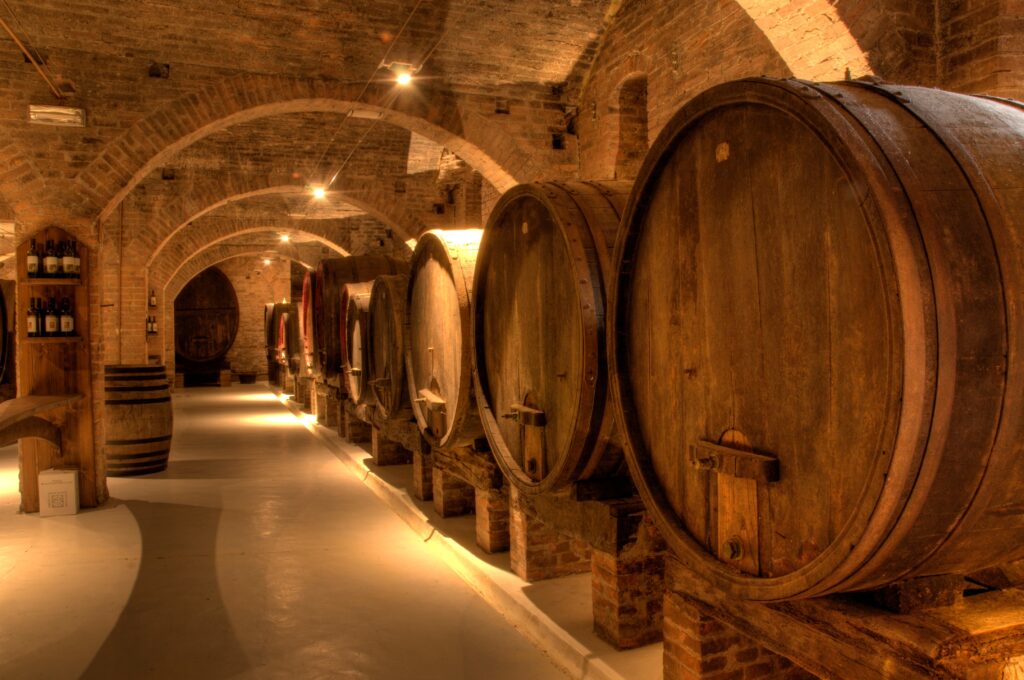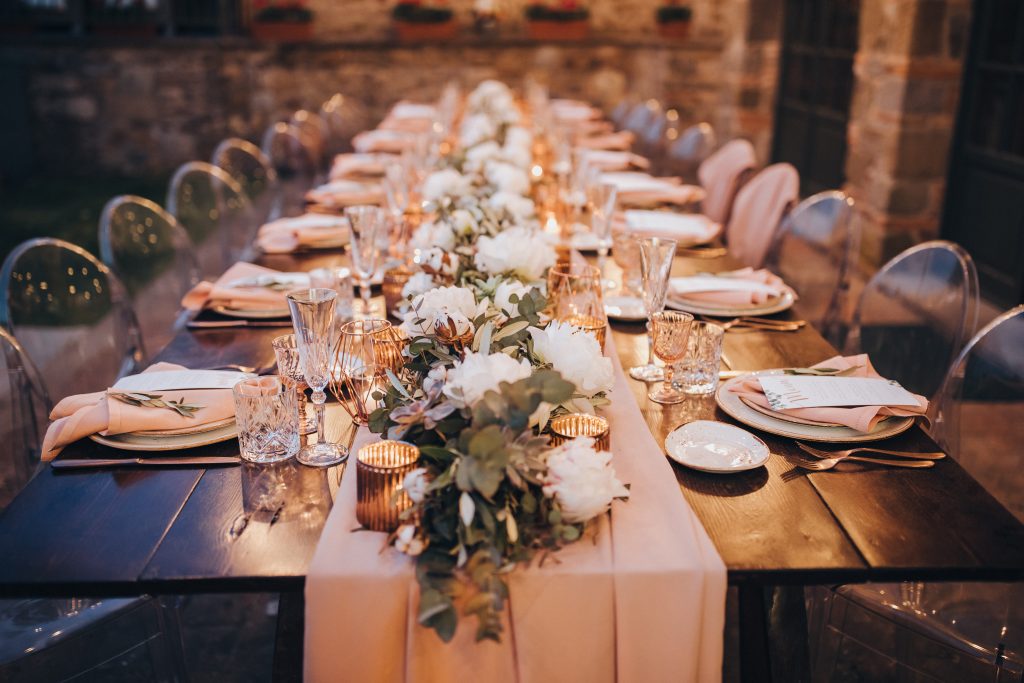VITICULTURE IN TUSCANY
Tuscany, with its fairytale cultural landscapes, especially Chianti, is considered by many wine lovers to be one of the best wine-growing regions in Italy alongside Piedmont.
Interesting facts about winegrowing in Tuscany
The Apennine Mountains, which form a protective wall to the north and east of the region and the moderating influence of the Tyrrhenian Sea favour the mild Mediterranean climate – the best conditions for winegrowing!
Vines have been cultivated in Tuscany for thousands of years and it is said that the Greeks taught the Etruscans 3,000 years ago that the grapes were not just for food. Tuscany is not the most productive region in terms of quality, with about 20 million litres of wine a year, but more than half of Tuscan wines carry the DOC (Denominazione di Origine Controllata) and DOCG (Denominazione di Origine Controllata e Garantita) controlled designations of origin, which is the highest Italian quality class.
The cultivation area in Chianti
The Chianti-Classico area is actually more of a forest than a wine region! Only one tenth of the entire area, covering about 7,000 ha, is used for viticulture. Between 250 and 450 m altitude are the best sites of the “Classico” with stony, infertile Alberese and Galestro soils. In the Conca d’Oro sun basin and also near Monto, Radda and the hills of Castellina, the top locations of the Sangiovese grapes are located: here, height, soil, microclimate and solar radiation interact optimally. North of Florence, the lighter Chianti putto is pressed.
In the past, Chianti Classico had to consist of 80% Sangiovese, Canaiole and Cabernet Sauvignon and about 10% white wine. Since 2006 the blending of white wine is forbidden and more and more winegrowers produce their wine from 100% Sangiovese. Every year in mid-September, the new Chianti Classico is presented at the Rassegna del Chianti Classico wine fair. Usually it carries the black cock of the “Consorzio del Marchio Storico” as emblem, to which many producers are attached.
The wines of Montalcino and Montepulciano
Montalcino was famous in ancient times for its white wine. It was not until the end of the 19th century that a certain Ferruccio Bondi-Santi began to cultivate the red Sangiovese and made the powerful wine “Brunello”. At first it was only reserved for a few enthusiasts, but in the 1970s foreign companies invested on a large scale in viticulture. Many lands and landscapes were misused and the wine-growing area was reforested from 60 to about 2,000 hectares.
Montepulciano may not be quite as successful, but as a red wine region it is much older than Montalcino! The hill on which the picturesque village is situated is particularly worth seeing – medieval escape routes and cellar vaults, which literally perforate the hill, bear witness to its eventful past.
Other inland wine regions are the Colli Fiorentini in the south and east of Florence, where the excellent Chianti Colli Fiorentini is produced. Also in the picturesque San Gimignano very good white wines are offered again recently. Vernaccia di San Gimignano has been a DOCG wine since 1993. On the coast, the warm coastal climate is particularly suitable for the cultivation of Cabernet and Merlot. The traditional wines of the Maremma, which extends south of Montalcino as far as Grosseto, are the white “Pitigliano” and the red wine “Morellino di Scansano”.
Booking and further information
Discover the beautiful winegrowing regions in Tuscany on an individual group tour or within a custom-made supporting program of your corporate event in Italy! Please contact us for further details regarding travel schedules and price information. We are looking forward to your no-obligation request via our contact form, e-mail or by telephone at +49 611 945879 42.
